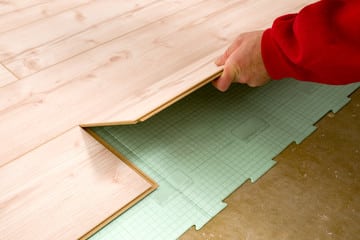Renovating historic ceilings presents a unique challenge for building professionals and restoration enthusiasts. This work aims to preserve the original appearance and heritage value while ensuring the safety and durability of the structures. In this article, we will explore the different techniques and materials recommended for successfully renovating historic ceilings.
Damage assessment and diagnosis
Before starting the renovation process, it is essential to assess the current condition of the ceiling and identify the causes of deterioration. Common problems include water leaks, insect attacks and structural movement. Once the causes have been identified, a suitable renovation plan can be developed.
Visual inspection and surveys
To diagnose problems and assess the condition of the ceiling, a thorough visual inspection should be carried out, followed by non-destructive probing. Using tools such as borescopes, thermal imaging cameras, or moisture meters can help identify hidden issues without damaging historic features.
Intervention of a specialist
It is important to call on a heritage conservation specialist who will be able to analyze the materials, the construction techniques used and the artistic styles of the time. A specialist will also be able to advise on appropriate techniques and materials for the renovation, in order to best preserve the integrity of the historic ceiling.
Renovation techniques
Renovation techniques vary depending on the damage to the ceiling, the initial materials and the architectural style of the building in question. Here we’ll cover some of the most commonly used techniques for restoring historic ceilings.
Support stabilization
Stabilizing the support is an essential step to ensure the safety and durability of the structure. This usually involves reinforcing load-bearing elements such as beams, joists or trusses using steel rods, anchoring systems or metal brackets. It is necessary to treat these elements carefully in order to minimize visual impacts and irreversible changes to the historic ceiling.
Conservation and consolidation of decorations
Historic ceilings are often decorated with painted decorations, frescoes, sculptures or moldings which require special treatment during renovation. Conservation methods include gentle cleaning, fixing loose elements, and reinstating missing fragments. In some cases it may be necessary to carry out more invasive interventions such as restoring the original colors or reproducing lost decorations.
Recommended materials for renovation
The choice of materials is crucial to a successful renovation of historic ceilings. A wide range of modern and traditional materials are available to meet the specific needs of each project.
Traditional materials
- Brick : Brick is an integral part of many historic ceilings, particularly in 19th century industrial architecture. To maintain the appearance and integrity of these structures, it is recommended to use bricks similar in material, color and texture to the original ones.
- Drink : Solid wood ceilings can be restored using local species and traditional carpentry techniques. In some cases, complete replacement of damaged elements may be necessary, while in other situations less invasive interventions such as injection of epoxy resins or nailing and screwing are preferable.
- Rock : Stone or stone slab ceilings should be restored with similar materials and suitable mortars. It is also possible to treat the surface of the stone with consolidants to strengthen its mechanical resistance and improve its durability.
Innovative and ecological materials
In addition to traditional materials, innovative and environmentally friendly solutions can be used in the renovation of historic ceilings. These products offer benefits in terms of sustainability, energy efficiency and low environmental impact.
- Fiberboard: Fiberboard can be used to reinforce wooden ceilings while maintaining better thermal and acoustic insulation. They are also biodegradable and recyclable, making them an ideal eco-friendly option for heritage restoration.
- Lime-based mortar: Lime-based mortar is a very popular material for the restoration of historic stone or brick ceilings, because it better regulates humidity and promotes the diffusion of water vapor.
- Resins and coatings: Epoxy resins and other consolidation products stabilize and protect damaged elements without changing their appearance.
Renovating historic ceilings is a complex job that requires particular attention to the techniques used and the materials selected. By following these recommendations, it is possible to preserve the beauty, integrity and heritage value of these unique structures.







